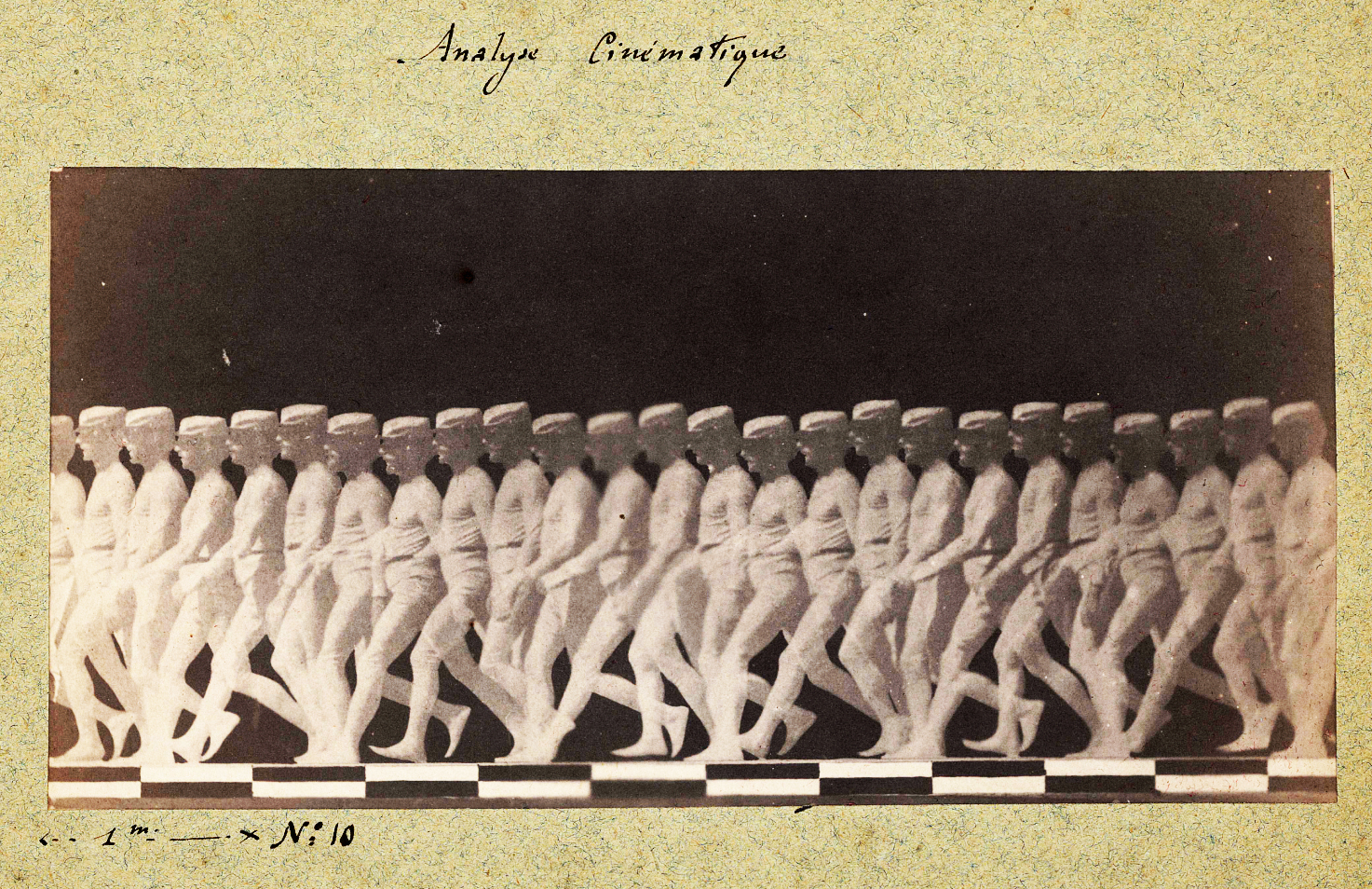
Étienne-Jules Marey, Kinematic Analysis (Analyse cinématique), c. 1882, from the album "Station Physiologique, 2 - Locomotion Humaine - 1886," Fonds Marey, Collège de France
Tuesday, May 9, 2017 - 2:00pm to 4:00pm
Jaffe 104
Dissertation Defense - Alex Kauffman, "'Faire un Cinéma': Marcel Duchamp and the Moving Image"
Marcel Duchamp was among the first artists in the transatlantic avant-garde to acquire his own movie camera in 1920. Yet he would produce only a single complete film, Anemic Cinema (1926), over the course of his decades-long career. As the lone film made by an artist better known for his work in other media, Anemic Cinema occupies a contested place in histories of avant-garde art and cinema. For some, it is a Dada-inspired effort to parody the conventions of silent film, and is determinedly “anti-cinema.” For others, it is a perceptual experiment entirely divorced from filmmaking, relating instead to the artist’s kinetic sculpture-like “optical machines.” This dissertation reassesses Duchamp’s engagement with the moving image, arguing that the artist interrogated period conceptions of the cinematic medium and spectatorship in both filmic and non-filmic works made between 1911 and 1968. Through extended analyses of visual art and films by Duchamp and his contemporaries, scrutiny of archival materials, and readings in media and film theory, Faire un Cinéma constructs an alternative history of avant-garde moving image production in France and the United States during the emergence and maturation of popular cinema across the first half of the twentieth century.
Four chapters, arranged roughly chronologically with a comprehensive introduction and conclusion, trace the artist’s moving image works and their significance within period film and media discourses. The project examines the shifting notions of the cinematic articulated in the artist’s “chronophotographic” cubist paintings of 1911 and 1912 and mixed-media-on-glass The Bride Stripped Bare by Her Bachelors, Even (The Large Glass) (1915-23); the optical machines, cinematographic experiments, and film notes leading up to Anemic Cinema in the 1920s; a three-minute dream sequence within the feature film Dreams That Money Can Buy (1947) and accompanying cover design Please Touch; and the assemblage Étant donnés: 1° la chute d'eau, 2° le gaz d'éclairage (1946-66) and its Manual of Instructions (1966). Together, the chapters offer a new perspective on the role of moving images within avant-garde culture, one that also addresses current concerns regarding cinema and medium-specificity in the post-celluloid digital age.

